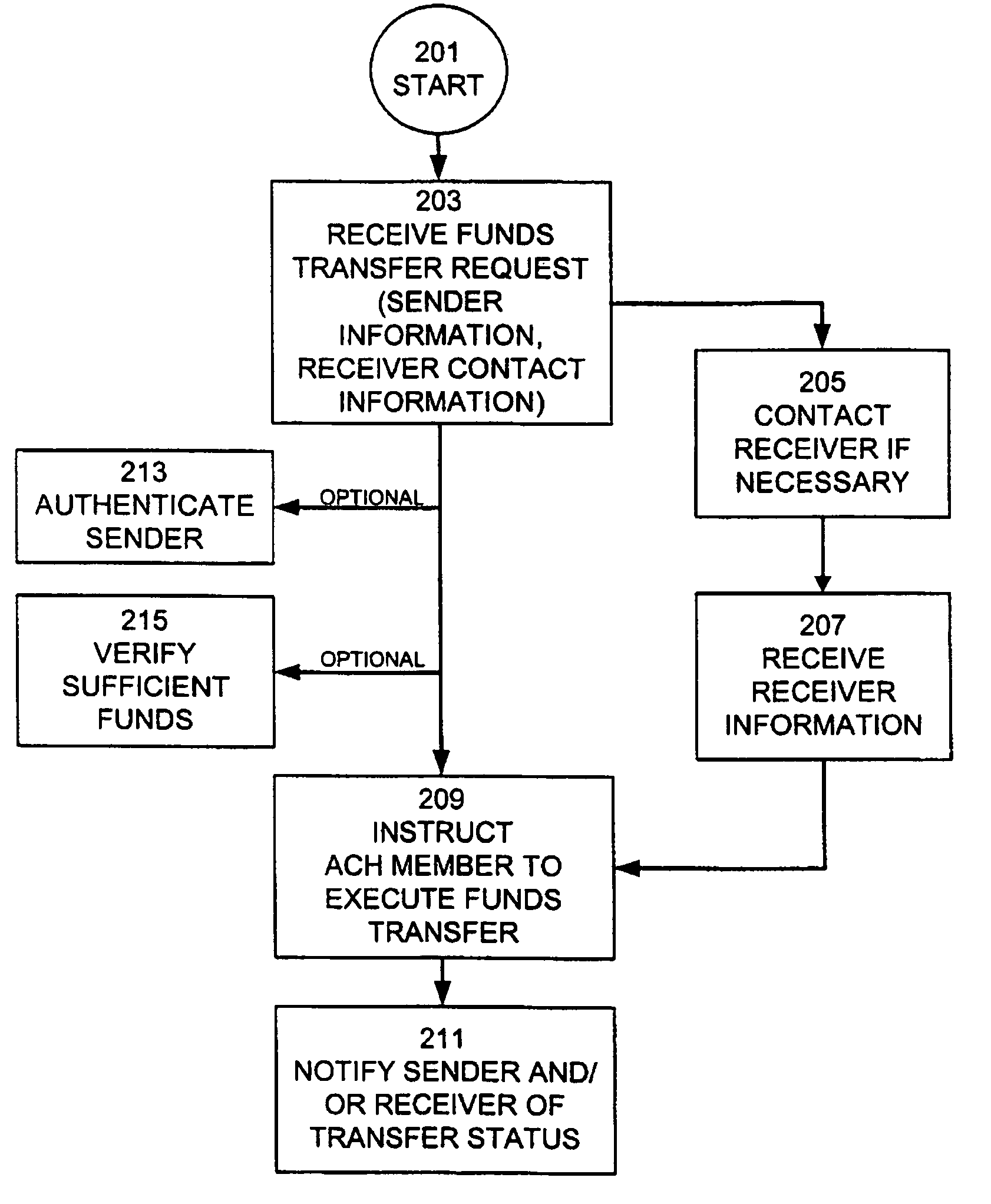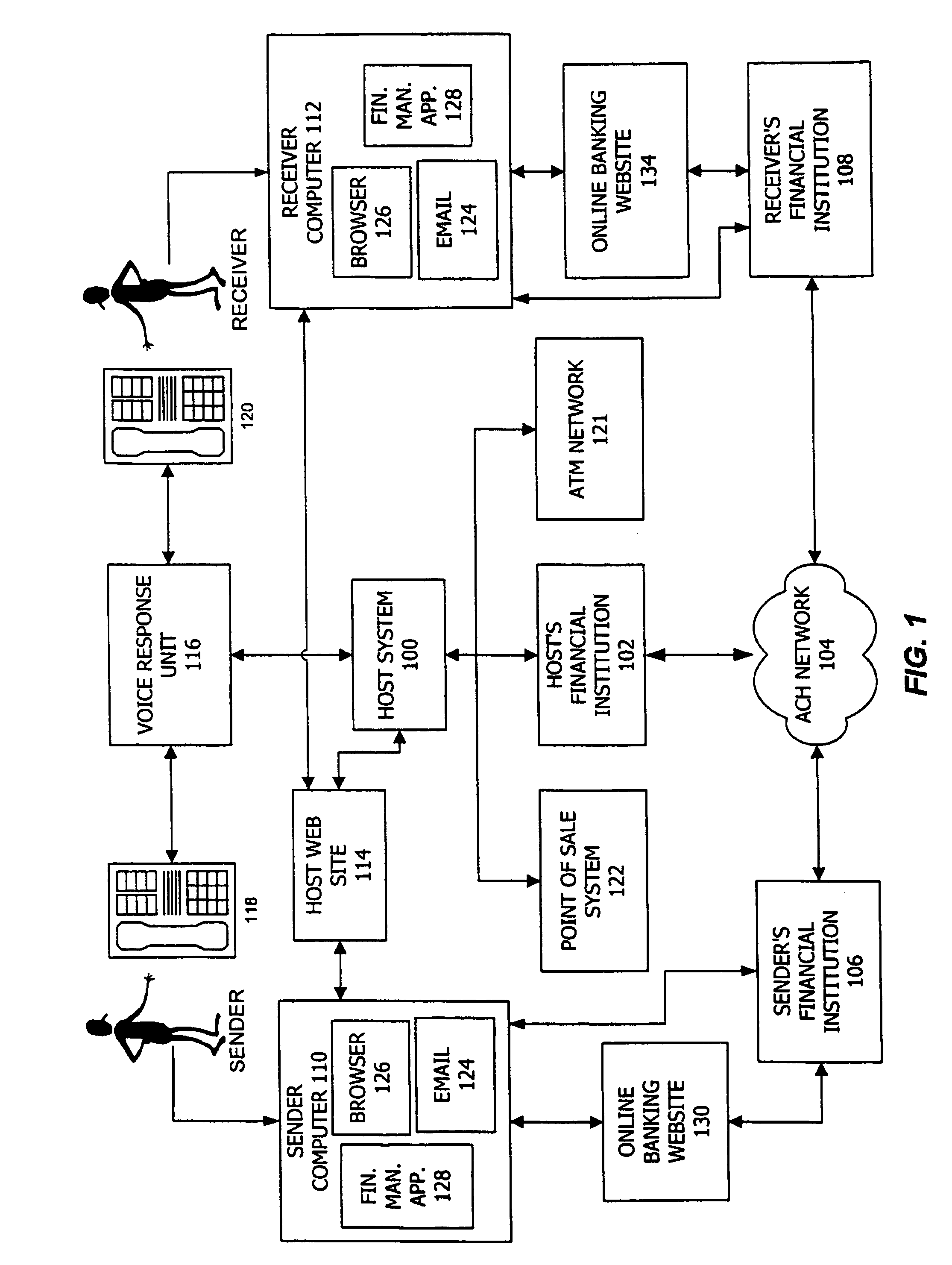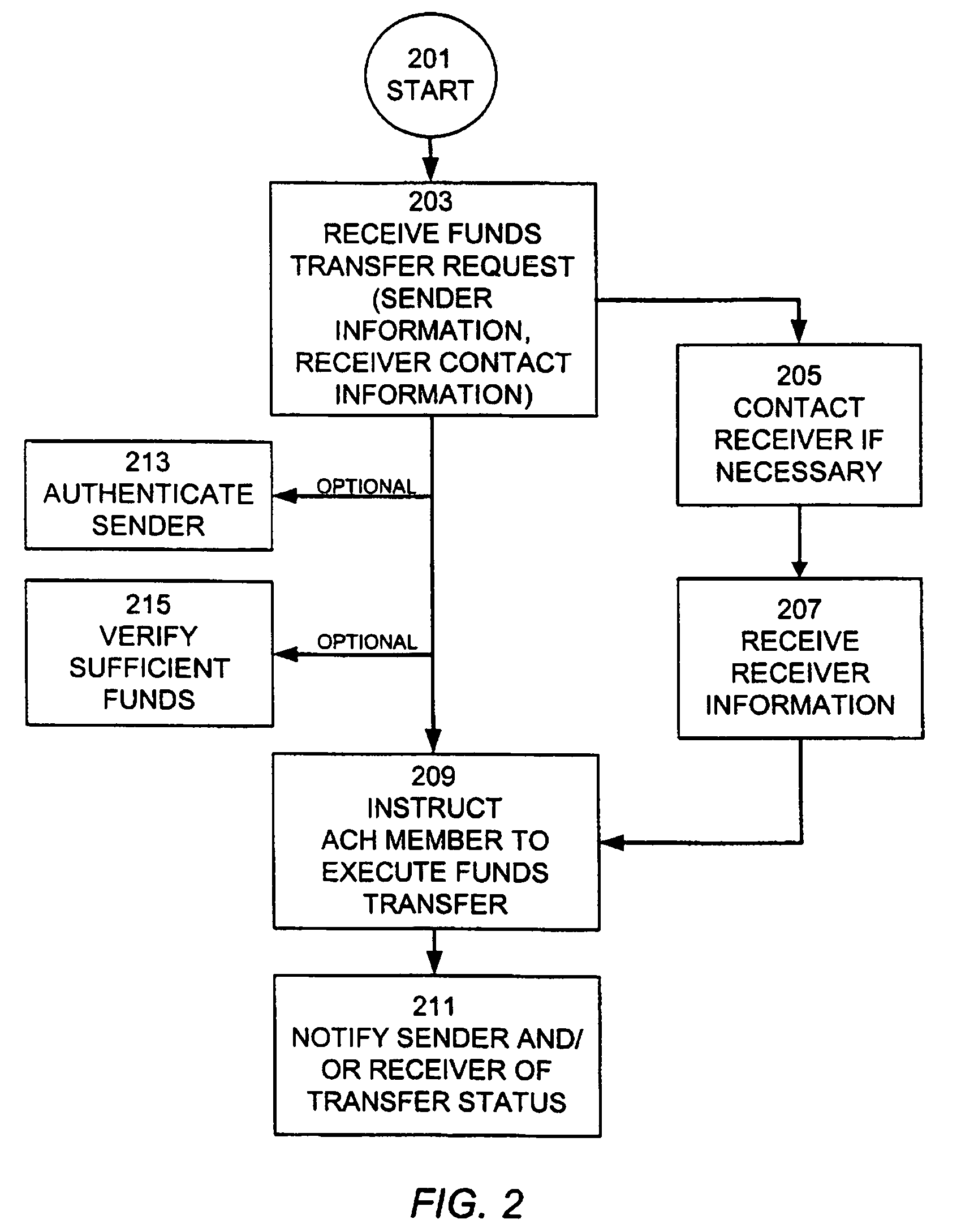[0029]A further advantage is that neither the sender nor the recipient has to be previously registered with its financial institution (or with the business managing the host system) prior to the transaction to participate in ACH transfers. More significantly, the sender does not have to have any prior knowledge about the recipient's account in order to initiate the funds transfer. The only information the sender needs is information sufficient to contact the recipient, such as the recipient's name, or its email address, telephone number, or the like, information that is readily available and easily obtained. Thus, the present invention enables individuals to quickly and efficiently transfer funds to others, such as friends or relatives, make electronic payments to small businesses directly (instead of by check or “online bill payment” which is still check-based), and transfer funds between financial institutions. A final advantage of the present invention is that the funds transfer process can take place without any human intervention or assistance to the sender or the receiver.
[0030]The present invention may be used for various different types of funds transfers. These include payments to individuals, payments to businesses, payments to tax authorities, transfers between the sender's own accounts at different financial institutions, payments for online purchases, and online bill payment.
[0031]For example, payments to businesses may be conducted in at least two different ways. Certain businesses may choose to register with the host system, and provide ahead of time the routing / transit and account numbers that are to be used for receiving funds transfers. In this embodiment then, the sender—who need not be previously registered with the host system—provides the funds transfer amount (e.g. the amount of the bill they are paying), and identifies the business to transfer the funds to, but need not provide an email address or other contact information for the recipient, since this information is known already to the host. In this embodiment, the host does not contact the recipient as before, but rather initiates the two ACH transfers, first from the sender's account to its own, and then from its account to the recipient's. Since the business may be receiving many such funds transfers, it must know which of its customers' accounts to credit for is each transfer. Accordingly, the host system sends this information (individually or in batches) to the recipient business, identifying each sender by its business account number with the business, and the amount of the funds transfer made by that sender. This allows the business to properly allocate the received funds and credit those customer's accounts with proper payment.
[0032]Payments to tax authorities are treated similarly, with the tax authority providing its target account information to the host system ahead of time.
[0033]Transfers between the sender's own accounts are particularly useful. Today, many people maintain accounts at multiple, unrelated financial institutions, such as checking and saving accounts at a bank, brokerage and investment accounts at a brokerage firm, CD's and other cash deposits at yet another institution. Normally, a customer has to manually transfer funds, by withdrawing it as cash or in a check from one institution and depositing it at another institution. With the present invention, the sender can specify himself as the recipient, and then provide the appropriate target account information for the target account of the transfer. In one embodiment for a web-based system, self-transfers may be handled in a single transaction, with the sender providing both the source and target account information to begin with, eliminating the step of the host contacting the recipient (here the sender) to obtain this information.
[0034]Payments to online vendors may also be made with the present invention, providing a convenient and effective payment system for transactions on the World Wide Web. In this embodiment, the sender is assumed to be shopping at an online store or service, or the like. To effect payment for a purchase, an unregistered sender again provides the appropriate source account designation information for its source account (if sender has previously registered with the host, then the sender would not have to edit the account information each time unless she decides to change the source account for a payment). The online vendor couples this information with the routing / transit number and account number for its target account for receiving the payment, along with the payment amount. This information is forwarded over the Web to the host system, which again effects the appropriate ACH transfers, as described above.
 Login to View More
Login to View More  Login to View More
Login to View More 


